#Stenella frontalis
Note
Has there been a case of a hybrid between a bottlenose and an Atlantic spotted dolphin?
Perhaps! No one knows for sure. There has been no definitive proof from DNA samples of wild animals, nor has it ever been confirmed in captive animals. However, there is much reason to believe it is plausible, and one possible hybrid has been observed.
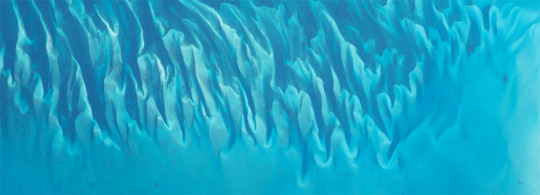
Let me take you to The Bahamas. Specifically, Great Bahama Bank and Little Bahama Bank. They're sprawling sandbanks surrounding the islands, and many Atlantic spotted dolphins as well as coastal Common bottlenose dolphins make their home there. The spotted dolphins have been studied for more than 30 years by Denise Herzing and her associates. While by far the most encounters are with single-species groups, there have been dozens of mixed species encounters as well.
Many of these are aggressively sexual in nature, with males of both species sparring and trying to enter each other. Male bottlenose dolphins often seem to dominate the smaller spotted dolphins during these encounters, though the spotted dolphins have been seen retaliating, and it is speculated they don't actually experience the harassment as very negative. Since much of the action is male-on-male or involves juvenile animals not yet sexually mature, it seems in many cases the nature of these encounters is more social than sexual. However, multiple cases of interspecific male-on-female copulation have been observed.
With so much going on, the potential for hybridism is great. And since the two species are morphologically quite similar (especially when young), a hybrid could easily fly under the radar.
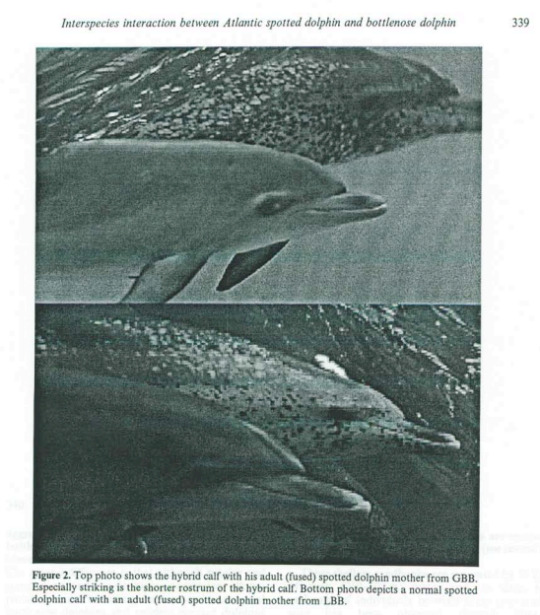
In February of 2003, Herzing and her team observed a female spotted dolphin with an unusual looking calf. The calf had a shorter rostrum than is normal for spotted dolphins in the area, but it was longer and more elegant than that of a Bahamian bottlenose. Herzing assumed it could be a hybrid calf. However, since no DNA testing was done and the calf was only observed for two days, this can't be confirmed. In 1989 and 1996 there have also been observations of female spotted dolphins mothering over bottlenose dolphin calves. In one case the calf was emaciated, and the spotted dolphin swimming with it wasn't lactating, so most likely the calf died. In another case it was only a temporary association and the bottlenose calf returned to their real mother after a while.
So a lot of interesting things going on. The studies are still ongoing. To my knowledge no large scale DNA testing has been done, nor any new "suspect" animals observed. Perhaps in the future a hybrid will be confirmed! Or perhaps it turns out this is one of those mixes that just doesn't work.
I highly recommend you read the study the photo comes from: "Interspecies interactions between Atlantic spotted dolphins, Stenella frontalis and bottlenose dolphins, Tursiops truncatus, on Great Bahama Bank, Bahamas". And many of the other studies done by Denise Herzing's team can be read for free here: https://www.wilddolphinproject.org/media/scientific-publications/
#namtalk#hybridism#hybrid#dolphin hybrid#Common bottlenose dolphin#Tursiops truncatus#Atlantic spotted dolphin#Stenella frontalis#dolphin#The Bahamas#Great Bahama Bank#Little Bahama Bank#Denise Herzing#Wild Dolphin Project
128 notes
·
View notes
Text

Atlantic spotted dolphin "Stenella" frontalis
Observed by sadrita_bio, CC BY-NC
#Stenella frontalis#Atlantic spotted dolphin#Cetacea#Delphinidae#cetacean#dolphin#Macaronesia#Spain#Canary Islands#Atlantic Ocean
15 notes
·
View notes
Text
However, even when this activity is accompanied by overt aggression, Bottlenose and Spotted males that interact sexually with one another may later also band together and cooperate with one another.

"Biological Exuberance: Animal Homosexuality and Natural Diversity" - Bruce Bagemihl
#book quotes#biological exuberance#bruce bagemihl#nonfiction#bottlenose dolphin#tursiops truncatus#atlantic spotted dolphin#stenella frontalis#cooperation#banding together
0 notes
Text
Later, when they begin mating heterosexually, they still retain their primary male pair-bonds, and in some populations male pairs and trios cooperate in herding females or in interacting homosexually with Spotted Dolphins.
"Biological Exuberance: Animal Homosexuality and Natural Diversity" - Bruce Bagemihl
#book quote#biological exuberance#bruce bagemihl#nonfiction#bottlenose dolphin#tursiops truncatus#atlantic spotted dolphin#stenella frontalis#heterosexual#pair bonding#herding#homosexual
0 notes
Text
Spinner Dolphins seem to be more uniformly bisexual without extensive periods of exclusive homosexuality, often alternating between same-sex and opposite-sex interactions in quick succession (this sort of concurrent bisexuality has also been observed in Bottlenose and Atlantic Spotted Dolphins).
"Biological Exuberance: Animal Homosexuality and Natural Diversity" - Bruce Bagemihl
#book quote#biological exuberance#bruce bagemihl#nonfiction#spinner dolphin#stenella longirostris#bisexual#homosexuality#bottlenose dolphin#atlantic spotted dolphin#stenella frontalis
0 notes
Text

Atlantic spotted dolphins (Stenella frontalis) near Bailey Town, The Bahamas
98 notes
·
View notes
Text
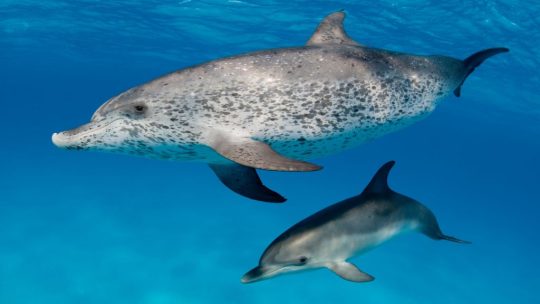
Atlantic spotted dolphin | Stenella frontalis

Amazon river dolphin | Inia geoffrensis
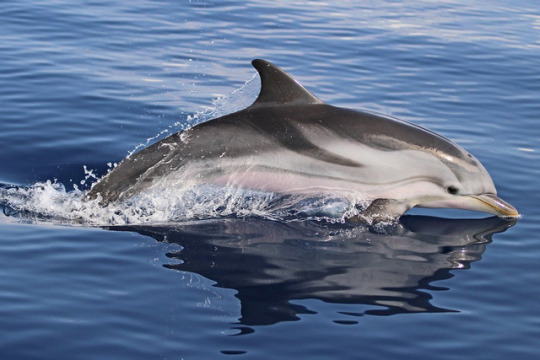
Striped dolphin | Stenella coeruleoalba
May not be surprising that plenty of dolphins exhibit homosexual behavior, but they sure do!
🏳️🌈, 🏳️🌈, 🏳️🌈
#boras posts#salt#marine life#ocean life#ocean#cetaceans#dolphins and whales#dolphins#marine mammals
140 notes
·
View notes
Text
Some of my Fakemon ideas. If you want to illustrate any of them, go right ahead! Just be sure to tag me so I can see the art! And who knows, maybe I’ll draw some, too!
Chirplume— Bird-of-Paradise Pokémon
Type: Flying, normal
Inspiration: Lawes's Parotia
Etymology: "Chirp" and "plume"
Parotiris— Bird-of Paradise Pokémon (evolved form of Chirplume)
Type: Flying, normal
Inspiration: Lawes's Parotia, King-of-Saxony Bird of Paradise
Etymology: "Parotia" (after the bird-of paradise) and "Iris" (the Greek goddess of the rainbow)
Notes: Has a prehensile tail and head plumes.
Peregyr— Wandering Falcon Pokémon
Type: Flying
Inspiration: Peregrine Falcon and Gyrfalcon
Notes: Can be found in most regions. In certain regions, it has variant forms.
Etymology: "Peregrine" and "Gyr" (after the two real-world falcons that inspired it)
Martree— Pine Marten Pokémon
Type: Grass
Inspiration: American Pine Marten
Etymology: "Marten" and "tree"
Notes: The grass-type starter for my region.
Martenrec— Pine Marten Pokémon (evolved form of Martree)
Type: Grass
Inspiration: American Pine Marten, Lowland Streaked Tenrec
Etymology: "Marten" and "tenrec”
Martamarack— Conifer Pokémon (evolved form of Martespruce)
Type: Grass
Inspiration: American Pine Marten, Lowland Streaked Tenrec
Etymology:"Marten" and "tamarack"
Notes: Has sharp, pine-needle-like spines in its fur, and its tail is completely covered in spines. Not only that, the spines come loose easily, so it's a good defense against predators (and the occasional human).
Melodiark— Seasons Pokémon
Type: Flying, grass
Inspiration: Horned Lark, Western Meadowlark, and Yellow-throated Longclaw
Etymology: "Melodious" and "lark"
Notes: Its throat patch changes color with the seasons.
Eeviave— Evolution Pokémon
Type: Flying, normal
Inspiration: Plain-colored Tanager
Notes: Basically an avian form of Eevee. Has the following evolutions:
Arboriave (grass type)
Flariave (Fire type)
Aquariave (water type)
Glaciave (ice type)
Nyctiave (dark type)
Joltiave (electric type)
Mysticiave (psychic type)
Terestriave (ground type)
Notes: All forms are based on tanagers in the genera Tangara and Stilpnia.
Falcyan— Blue Falcon Pokémon (pre-evolution of Peregyr)
Type: Flying/normal
Inspiration: Peregrine Falcon, Merlin Falcon
Etymology: "Falcon" and "Cyan"
Delphy— Dolphin Pokémon
Type: Water, Psychic
Inspiration: Atlantic Spotted Dolphin, Long-beaked Common Dolphin
Etymology: From the Latin word delphinus, meaning dolphin. The name (and secondary typing as "psychic") is also a reference to the Oracle of Delphi in Greek mythology.
Stenellys— Dolphin Pokémon (evolved form of Delphy)
Type: Water, Psychic
Inspiration: Atlantic Spotted Dolphin, Long-beaked Common Dolphin
Etymology: From the Spotted Dolphin's scientific name, Stenella frontalis.
Prairantler— Pronghorn Pokémon
Type: Grass, electric
Inspiration: Pronghorn Antelope, Thomson's Gazelle
Etymology: "Prairie" and "Antler"
Mantivy— Mantis Pokémon:
Type: Grass, bug
Inspiration: Praying Mantis, bark mantis
Etymology: "Mantis" and "Ivy"
Liturgorsa— Bark Mantis Pokémon (evolved form of Mantivy)
Type: Grass, bug
Inspiration: Praying mantis, bark mantis
Etymology: From Liturgusa, a genus of bark mantids, and "gorse", a thorny plant.
Eeviave's evolutions
Arboriave— Climbing Bird Pokémon
Type: Grass, flying
Distinguishing features: Reversible toe, allowing feet to switch between anisodactyl (3 toes in front and 1 toe in back) for perching and zygodactyl (2 toes forward, 2 toes back) for climbing.
Plumage: Two-toned green head (with short, spiky crest that can be raised or lowered), black chest and back; bright green spot on chest, green markings on wings, tail, and flanks; white belly
Flariave— Firebird Pokémon
Type: Fire, flying
Features: Brilliant red-orange plumage; short crest of flame-feathers. The flame-crest gets bigger when the bird is excited or agitated. Flariave is also usually warm to the touch.
Aquariave— Swimming Bird Pokémon
Type: Water, flying
Features: Waterproof feathers, semi-webbed feet. Also has nictitating membranes (transparent eyelids) that it uses to protect its eyes when diving underwater.
Plumage: Almost identical to Arboriave (its "sibling" evolution) except the green is replaced with blue and instead of a spiky crest, it has a few feathers on the back of its head that stick up.
Glaciave— Snowbird Pokémon
Type: Ice, flying
Features: Pale blue and white/silver plumage, and flight feathers resembling ice crystals. Can survive in colder environments than any of Eeviave's other evolutions.
Nyctiave— Solitary Pokémon
Type: Dark, flying
Features: Jet-black plumage with white belly and a few colored rings (much like Umbreon, with whom it is often seen). It is the only nocturnal evolution of Eeviave, and also the most difficult to find in the wild.
Velociave— Fast Flying Pokémon
Type: Electric, flying
Features: Gold, blue, and black plumage; long, pointed wings and tails. Fastest of all of Eeviave's evolutions. Much like real swallows, it lives in large colonies.
Mystiave— Mystic Bird Pokémon
Type: Psychic, flying
Features: Mostly purple and blue plumage— resembling an amethyst crystal. Also has telekinetic and telepathic powers.
Terrestriave
Type: Ground, flying
Features: Muted brown and orange plumage; long, sturdy legs, and long hind claws for traction. Also has spurs on its wings, which it uses for self-defense.
More ideas
Florafawn— Fawn Pokémon
Type: Grass, electric
Inspiration: Pronghorn antelope fawn
Certhitta— Treecreeper Pokémon
Type: Grass, flying
Inspiration: Brown Treecreeper, Red-breasted Nuthatch
Etymology: From Certhia (the genus name for treecreepers) and Sitta (the genus name for nuthatches)
Notes: Unusually for a bird Pokemon, it has four legs. (The inspiration for this came from the little bird creature in the Botanicula game.) this guy:

Boreowl— Owl Pokémon
Type: Ice, flying
Inspiration: Boreal Owl, Northern Hawk Owl
Etymology: Derived from the Boreal Owl's common name.
Lacertri— Gliding Lizard Pokémon
Type: Grass
Inspiration: Draco Lizard
Etymology: Lacerta (Latin for lizard) and "tree."
Laceratur— Gliding Lizard Pokémon
Type: Grass
Inspiration: Draco Lizard
Etymology: Lacerta (Latin for lizard) and labatur (Latin for glide).
Dendrocerta— Forest Dragon Pokémon (evolved form of Laceratur)
Type: Grass, dragon
Inspiration: Draco Lizard
Etymology: Dentro (Greek for tree) and Lacerta (Latin for lizard.)
Notes: Cannot actually fly, but uses its patagia (flaps of skin on its flanks) to glide hundreds of meters. Trained Dendrocerta will even let humans ride on their backs!
Calypta— Hummingbird Pokémon
Type: Flying, psychic
Inspiration: Costa's Hummingbird
Etymology: From the Latin name of the Costa's Hummingbird: Calypte costae.
Pipeslance— Sharp Beak Pokémon
Type: Flying, steel
Inspiration: Spotted Sandpiper, Northern Lapwing
Etymology: “Pipes” (short for sandpiper), and “lance”, a medieval stabby stick.
Notes: Its beak is as sharp as a dagger, as are the spurs on its wings and legs. You do not want to mess with a nesting colony of these Pokemon.
Gulpa— Bass Pokémon
Type: Water
Inspiration: Largemouth Bass
Etymology: "Gulp" + the letter "a"
Lemair— Sifaka Pokémon
Type: Grass, flying
Inspiration: Verreaux's Sifaka, flying squirrel
Etymology: "Lemur" + "air"
Notes: Like Lacertri, Laceratur, and Dendrocerta, this Pokemon cannot actually fly. Instead, it leaps and glides through the treetops.
Erminator— Ermine Pokémon
Type: Ice, fighting
Inspiration: Ermine
Etymology: "Ermine" + "Terminator"
Batsox— Savannah Fox Pokémon
Type: Ground, grass
Inspiration: Bat-eared fox
Etymology: From the Bat-eared Fox's common name, and from "socks" (a reference to its dark brown paws.)
Eromreven— Mimic Pokémon
Type: Dark, flying
Inspiration: Common Raven
Etymology: “Nevermore” spelled backwards.
Notes: Can convincingly mimic the calls of other Pokemon, and human voices as well.
Xaroc— Raven Pokémon (pre-evolution of Eromreven)
Type: Dark, flying
Inspiration: Common Raven
Etymology: From the Common Raven’s Latin name, Corvus corax. (Corax spelled backwards is “Xaroc.”)
Pipip— Sandpiper Pokémon (pre-evolution of Pipeslance)
Type: Flying, normal
Inspiration: Least Sandpiper, Piping Plover
Etymology: Onomatopoeia of the sandpiper’s calls.
Peregreen— Grass Falcon Pokémon
Type: Grass, flying
Inspiration: Peregrine Falcon, Merlin Falcon
Etymology: "Peregrine" + "green"
Emeralcon— Grass Falcon Pokémon (evolution of Peregreen)
Type: Grass, flying
Inspiration: Peregrine Falcon, Prairie Falcon
Etymology: "Emerald" + "falcon"
Nocterne — Black Tern Pokémon
Type: Dark, Flying
Inspiration: Black Tern, White-winged Tern
Etymology: “Nocturne,” “nocturnal,” and “tern”
Terraptor— Hunter Bird Pokémon
Type: Flying, fighting
Inspiration: Secretary bird (also called the hunter-bird)
Etymology: “Terra” (Latin for “Earth”) and “raptor”
Vuelox— Swift Fox Pokémon
Type: Electric
Inspiration: Swift Fox, Kit Fox
Etymology: From the Swift Fox’s Latin name, Vulpes velox.
Strykthorn— Shrike Pokémon
Type: Flying, fighting
Inspiration: Loggerhead Shrike
Etymology: “Strike” (spelled as “stryk”) and “thorn”
Verdarter— Flycatcher Pokémon
Type: Flying, grass
Inspiration: Verditer Flycatcher, Empidonax flycatchers
Etymology: “Verditer” + “darter”
Embird— Fire Thrush Pokémon
Type: Fire, flying
Inspiration: Varied Thrush
Etymology: "Ember" + “bird”
Notes: The fire-type starter for my region.
Calibender— Clownfish Pokémon
Type: Water
Inspiration: Clownfish
Etymology: a word my friend made up.
Laniorn— Tiny Shrike Pokémon (pre-evolution of Strykthorn)
Type: Flying, fighting
Inspiration: Loggerhead Shrike
Etymology: Lanius, (the genus name for shrikes) and ornis (meaning “bird” in Latin or Greek).
Bufflebird— Buffalo Bird Pokémon
Type: Flying, normal
Inspiration: Brown-headed Cowbird (AKA Buffalo-bird)
Etymology: “Buffle” + “bird”
Notes: Follows hoofed-mammal Pokémon around. The female lays her eggs in the nests of other songbird Pokémon, who raise the chicks as their own.
Auriole— Golden Bird Pokémon
Type: Flying, electric
Inspiration: Baltimore Oriole, Hooded Oriole
Etymology: Aurum (Latin for “gold”) and “oriole”
Tanagem— Tanager Pokémon
Type: Flying, fairy
Inspiration: Golden-hooded Tanager
Etymology: “Tanager” and “gem”
Reiharr— Marsh Pokémon
Type: Flying, ghost
Inspiration: Northern Harrier
Etymology: Anagram of the word "Harrier."
Argentaros— Silver Bird Pokémon
Type: Flying, steel
Inspiration: Silver-backed Tanager
Etymology: Argentum (Latin for silver) and pajaro (Spanish for bird.)
Notes: Is the counterpart of Auriole.
Pescatt— Fishing Cat Pokémon
Type: Water
Inspiration: Fishing cat, European Wildcat
Etymology: Pescar (Spanish for "to fish") and "cat" with an extra T
Notes: One of the three starters for my region. The other two are Lacertri and Embird.
Cheerilee— Robin Pokémon
Type: Flying, normal
Inspiration: American Robin
Etymology: Onomatopoeia of the American Robin's song.
Alithiyx— Truth Pokémon (evolution of Calypta)
Type: Flying, psychic
Inspiration: Marvelous Spatuletail Hummingbird, Plovercrest Hummingbird
Etymology: From the Greek Alitheia, meaning "truth."
Notes: Using its psychic powers, this Pokémon can sense the thoughts and emotions of others.
Lynxie— Lynx Kitten Pokémon
Type: Ice
Inspiration: Canada Lynx
Etymology: "Lynx" + "ie"
Avalynx— Snow Runner Pokémon
Type: Ice
Inspiration: Canada Lynx
Etymology: "Avalanche" + "Lynx"
Notes: Its large paws allow it to effortlessly run across deep snow without sinking.
Hopster— Kangaroo Pokémon
Type: Ground-fighting
Inspiration: Red Kangaroo (joey)
Etymology: "Hop" + "ster"
Rufupod— Kangaroo Pokémon
Type: Ground-fighting
Inspiration: Red kangaroo (adult)
Etymology: “rufous” (reddish) and “macropod” (the taxonomic family that includes kangaroos)
4 notes
·
View notes
Text
Animal of the Day!
Atlantic Spotted Dolphin (Stenella frontalis)

(Photo by Tanya Burnett)
Conservation Status- Least Concern
Habitat- Atlantic Ocean
Size (Weight/Length)- 109 kg; 2 m
Diet- Small fish; Squid
Cool Facts- Atlantic spotted dolphins live in small groups often mixed with other dolphin species. The pods are often led by a dominant male and a group of females with offspring. When a female dolphin is pregnant, the other Atlantic spotted dolphins are extremely protective of her, chasing off sharks and other dolphins. Baby dolphins often gain their spots after 8 years, giving them the camouflage they need to hunt fish in the open ocean. To hunt for squid, these spotted dolphins dive to 60 meters deep and can hold their breaths for 10 minutes at a time.
Rating- 11/10 (An underwater Dalmatian.)
#Animal of the day#Animals#Mammals#Dolphin#Marine mammals#Wednesday#September 21#Atlantic spotted dolphin#biology#science#conservation#the more you know
18 notes
·
View notes
Text

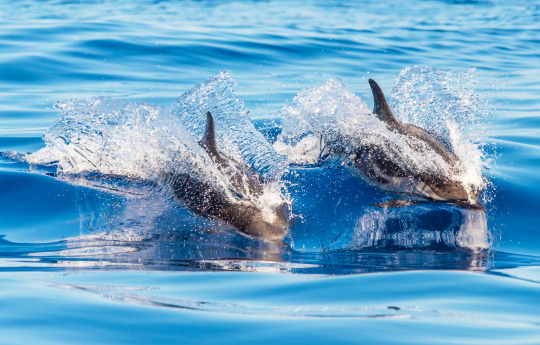
For now I am done with model photos and I will share the other stuff I have been doing. Here is a Pair of Atlantic spotted dolphins swimming together in the Ligurian Sea. Stenella frontalis older members of the species have a very distinctive spotted coloration all over their bodies. They have a grey top and a white belly. The photo was taken in 2022 of the coast of Genoa, Italy on one of the tour boats of @golfoparadiso Hope you enjoy the photos, I will be sharing more soon!
#wildlife#spotteddolphin#delfino#genovamorethanthis#Genova#Genoa#dolphins#Italy#dolphin#picoftheday#genovacity#genovagram#photooftheday#Liguria#marinelife#genovameravigliosa#genovaliguria#Italia#delfini#sea
2 notes
·
View notes
Photo
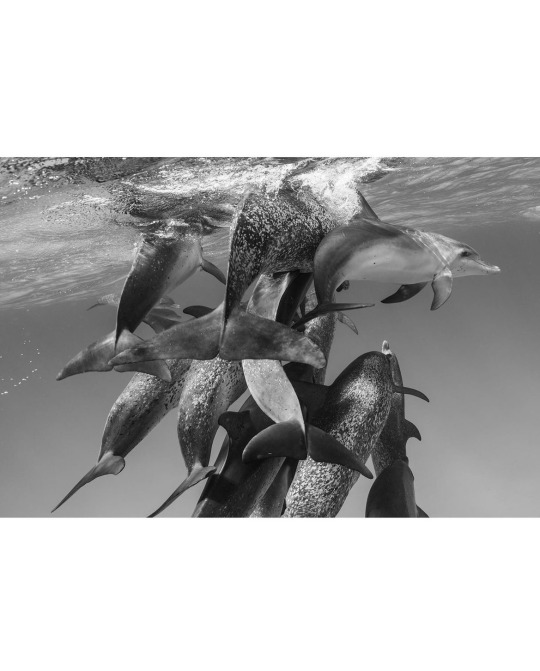
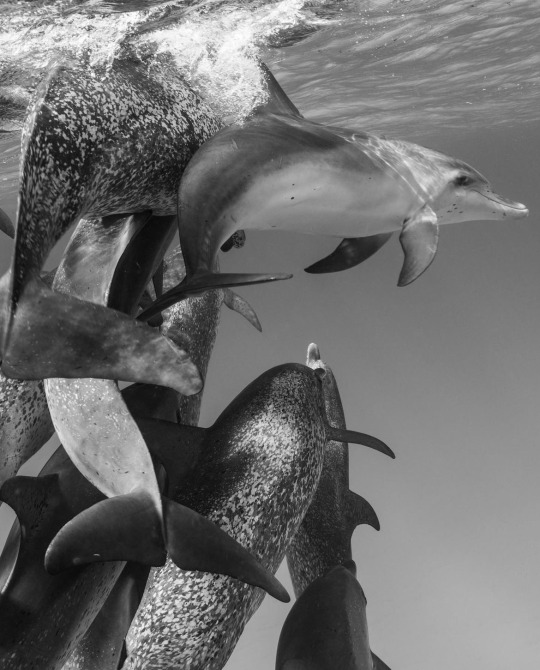
Pod of Atlantic Spotted Dolphins (Stenella frontalis), photographed by @mitty for Sealegacy
0 notes
Text

Atlantic spotted dolphin "Stenella" frontalis
Observed by whale_nerd, CC BY-NC
#Stenella frontalis#Atlantic spotted dolphin#Cetacea#Delphinidae#cetacean#dolphin#North America#United States#North Carolina#Atlantic Ocean
7 notes
·
View notes
Link
0 notes
Text
Final Major Project (FMP)
Marine Mammals
The first animals moved from the sea to colonise the land several million years ago. Global changes in climate and geography eventually convinced some of the mammals to return to the sea. Since then, these animals have evolved to be perfectly adapted to their surroundings. The majority of these animals are classified as cetaceans, which includes dolphins and whales. The other major group of marine mammals is the pinniped family, which includes seals and sea lions. Cetaceans can hold their breath for unimaginable lengths of time after breathing air and then diving. They are both peaceful and intelligent animals. Some of the largest brains in the world of mammals are found in the oceans. These animals have demonstrated remarkable communication and learning abilities. In the wild, they live in close family groups, caring for their young and each other. Their songs reverberate for miles beneath the waves. It is disheartening to think that most of these magnificent animals were hunted to extinction by humans. Today, however, they are returning under the protection of the majority of the world's governments. Their ambassadors help to save their kind by helping us better understand them in marine parks all over the world. The following is a list of some of the world's more well-known marine mammals.
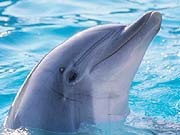
Photo © Corel Corporation
Atlantic Bottlenose Dolphin
(Tursiops melaena)
The bottlenose dolphin is one of the most well-known sea mammals. Their gentle nature has warmed our hearts. These highly social animals have been known to save humans in danger. They are intelligent creatures with brains comparable to ours. Some scientists believe they have complex communication abilities.

Photo © Corel Corporation
Atlantic Spotted Dolphin
(Stenella frontalis)
Except for the visible body spots, the Atlantic spotted dolphin resembles the bottlenose dolphin. They are generally smaller than their relatives. They travel in close family groups called pods, as do all dolphins.

Photo © Corel Corporation
Pilot Whale
(Globicephala melaena)
The pilot whale is a small member of the whale family, measuring approximately 10 feet in length. They are perhaps best known for mass strandings, where entire pods of these animals beach themselves in an apparent suicide attempt. This behaviour is still unknown.
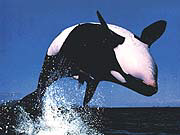
Photo © Corel Corporation
Killer Whale
(Orcinus orca)
Shamu, the killer whale from "Free Willy," is a highly intelligent and sociable animal. Most marine parks have it as a standard attraction. Orca pods have been observed cooperating when hunting for food. They will even beach themselves temporarily in order to catch one of their favourite foods, the sea lion.
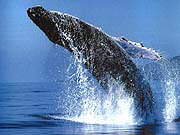
Photo © Corel Corporation
Humpback Whale
(Megaptera novaeangliae)
The humpback whale is a large animal that can grow to be 60 feet long. These magnificent creatures were hunted to the brink of extinction, but are now making a comeback. They eat plankton and are best known for their enchanting song, which can be heard for hundreds of miles beneath the sea.

Photo © Corel Corporation
Pacific Gray Whale
(Eschrichtius robustus)
Gray whales are one of the most well-known large whales. They are frequently seen swimming along the western coasts. These animals, which have long been endangered, are only now beginning to recover from overhunting. They can reach 50 feet in length and are frequently covered in barnacle patches.

Photo © Corel Corporation
West Indian Manatee
(Trichechus manatus)
Manatees are graceful and serene animals. They feed on water plants and live in Florida's waterways and shores. Other species can be found in the Indian and Gulf of Mexico. They are slow-moving creatures that are on the verge of extinction due to careless boaters. Most manatees have boat motor scars on their backs.

Photo © Corel Corporation
California Sea Lion
(Zalophus californianus)
Sea lions are probably the best-known members of the pinniped family. They inhabit the western coast of the United States and Canada. These animals are clumsy on land, but underwater their graceful ballets can reach speeds of 25 mph. They can dive to over 1000 feet, where they feed primarily on fish and squid.
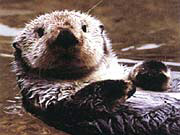
Photo © Corel Corporation
Sea Otter
(Enhydra lutris)
These adorable creatures were once hunted to extinction for their fur. They used to live in the western United States' coastal waters, but they are now protected and making a comeback. They are frequently seen lying on their backs eating their preferred food, crustaceans.
0 notes
Photo

There are just TWO DAYS left to own these iconic prints from more than 100 world renowned National Geographic photographers and support those caught in conflict zones. The sale ends this Tuesday, May 10. Visit vitalimpacts.org and follow @vital.impacts. 100% of profits will be donated to @DirectRelief who are on the ground now in Ukraine and around the world providing critical humanitarian aid. Photos by @sissebrimberg: Man walking along the levee on the Arno River, Florence, Italy. @melissafarlow: A mirror image of El Capitan framed with fall leaves is reflected in water pooled along the Merced River in Yosemite National Park. @jimmychin: Yosemite Valley after the Storm. @justmiel: Sloviansk and Kramatorsk school dance group competition. A year earlier Sloviansk became the first stronghold of pro-Russian rebels, but was retaken by the Ukrainian army in July 2014 and rebels moved to Donetsk. @brianskerry: Spotted Dolphins (Stenella frontalis) in the waters around Bimini in the Bahamas. @franslanting: Orchid, Private Collection. @joemcnallyphoto: National Ballet dancer Yanlis Abreu Gonzalez leaps in wonderful fashion in Jossie's kitchen in Havana. @jimrichardsonng: Central Park on a Foggy Night, New York. @amivitale: Manisha and Jasmin Singh pause in the Baoli, an ancient step well in a village near the city of Jaipur outside of India’s Thar desert. @evgenia_arbugaeva: Princess of the Tundra. Thank you to @cansoninfinity for donating the paper for this and to @paperandinkstudio and @theprintspace for your printing. #war #conflict #ukraine #solidarity #vitalimpacts https://www.instagram.com/p/CdWi0oIPZgc/?igshid=NGJjMDIxMWI=
1 note
·
View note
Photo
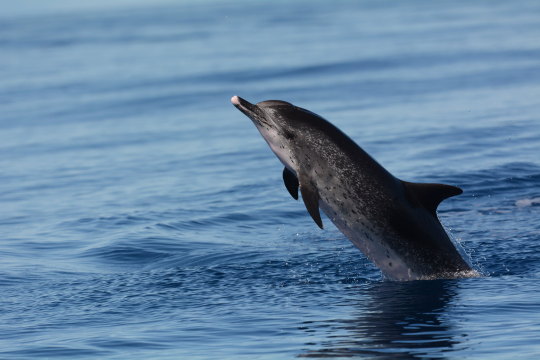
Atlantic spotted dolphin (Stenella frontalis)
Photo by Sylvere Corre
#atlantic spotted dolphin#dolphin#stenella frontalis#stenella#delphininae#delphinidae#delphinoidea#odontoceti#cetacea#whippomorpha#cetruminantia#artiofabula#artiodactyla#euungulata#scrotifera#laurasiatheria#boreoeutheria#eutheria#mammalia#tetrapoda#vertebrata#chordata
45 notes
·
View notes